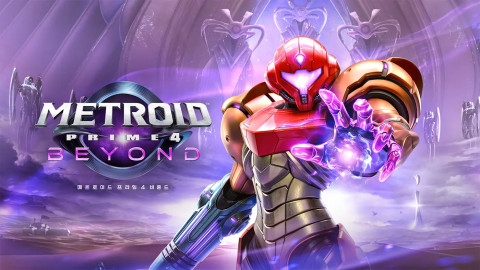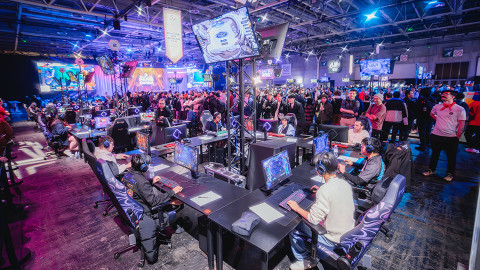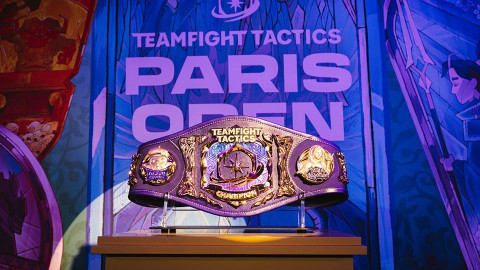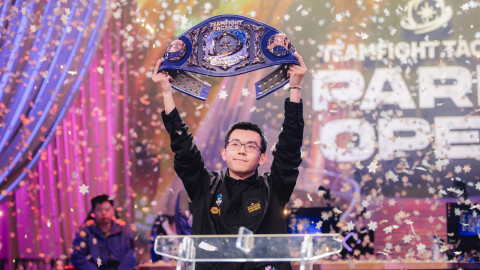
Just a third of the way into day 6 of Worlds 2020 group stage play, Group B was already decided. LEC’s Rogue (1-3) and PCS’ PSG Talon (0-4) were mathematically eliminated. DAMWON Gaming stood undefeated at 4-0, with JD Gaming close by at 3-1. There were four more matches to broadcast, but little to no reason to watch them, besides staying up to see which of DWG and JDG would take first. Two games later, the seeds were locked in, with DWG at 5-0 and JDG at 3-2, yet there were still two games left that would not affect anything whatsoever.
The one to blame for having almost a full day of World Championship competition with no stakes, no tension and nothing to look forward to is, once again, the putrid disease of a format that is best-of-1 round-robin. A relic of traditional sports times, round-robin’s countless flaws have once again robbed fans of the exhilaration that should, by design, accompany the biggest, most important tournament of the year.
In round-robin, every team plays every other team in its group a certain amount of times (once for traditional round-robin, twice for double round-robin, and so forth). It gives teams a chance to measure up against their entire group pool, which is something other formats — like Swiss or the so-called GSL groups (essentially a four-team double elimination) — don’t.
That is, however, the only positive of the format and it doesn’t make up for all of the problems it causes at all, among which are:

This is, without doubt, the biggest sin of the round-robin and exactly what happened in Worlds today. Group B’s top 2 and bottom 2 were already decided two matches into the day, but what is even worse is that the top 2 standings were fully just two games later. Once PSG defeated JDG, it ensured that DWG would take first and JDG would take second, which is the only standing position that matters for playoffs. Where the bottom 2 teams stand influences only the sadistic satisfaction of getting Worlds Pick’ems correct. It meant that 33% of the matches on that day had no reason to be played.
Group B’s premature resolution is not a precedent. In fact, this will likely happen again on Sunday, when Group D will almost surely be decided by the second match, too. DRX (2-1) plays FlyQuest (1-2) first, and then Top Esports (4-0) go against Unicorns of Love (0-3). Barring miracle upsets, FLY and UOL will be 1-3 and 0-4, respectively, and Group D will arrive at the exact same resolution as Group B.
Of course, there will be casters whose job is to pretend and convince you that there’s still value to these meaningless matches. That a bottom team can “play spoiler” to the top teams, as PSG did with JDG, robbing them of a chance to compete for #1 seed. The reality is that this is a trade-off that’s mostly salt in the wound to the eliminated teams, who still have to show up on stage and “give their best” while their luggage is being packed back at the hotel. Not to mention that “playing spoiler” often just means losing by 13K gold. Excuse me if I pass on such games.

While exciting for the viewer, in terms of competition tiebreakers are awful and can unnecessarily prolong an already long day of games, creating a very disproportionate experience for teams, depending on which group they’ve landed in. One team could end up qualified (or eliminated) halfway through the group (hello again, Group B), while another could end in a three-way tiebreaker — an elimination format that is extremely volatile.
Tiebreakers are so common that every single World Championship since 2014, which debuted the four-team double round-robin, has had at least one group with a tiebreaker. In 2019, there were two groups with tiebreakers. In 2018, there were three. In 2017, Fnatic, Immortals, and Gigabyte Marines were in a three-way tiebreaker and Fnatic ended up qualifying after playing five games in the span of six hours.
What the ubiquity of tiebreakers says, in the end, is that round-robin alone is not enough to decide who are the best teams of a group and that the format needs an auxiliary set of games to fix it.

This is another common occurrence, although not as prevalent as tiebreakers. We saw it with Team Liquid in Group A this Worlds, where at 3-3, TL needed G2 Esports to beat Suning, so that there can be a tiebreaker (…) for second place. G2 ended up losing and Suning finished above TL, eliminating them from the tournament.
Not holding your faith in your hands and praying for the stars to align is already bad enough — a fake “thrill” to keep viewers’ interest and have them cheer for a team they wouldn’t normally care about or support. The problem exacerbates when your placement depends on an otherwise pointless game (which happen often, as we established), where one or both teams — not fearing for their future — could be prone to testing cheese and left-field strategies they might use in the knockout stage, field a rookie sub to give them experience, play a deliberate spoiler because they prefer a certain side to not make it, or just not give their 100%, because they don’t need to.
No, G2 Esports didn’t troll against Suning to control the outcome of the group, but they could’ve easily done so if they wished to, and that’s the point. Imagine having your tournament life depending on such external factors, and not your direct performance against the opposition.
Year after year, Riot Games has not only failed to acknowledge the shortcomings of round-robin as a format, but they’ve taken seemingly every measure they can think of to make it even worse.
Playing best-of-1’s in an already volatile format further deteriorates the value of competition. All best-of-1 is good for is generating fake upsets and skewed narratives, illusory storylines of the “See? Anyone can make it” type. It is a format decision that trades off competitiveness for an artificial broadcast thrill: it engages the mass viewer better, as they are led to believe that uncertainty and upsets equal a better product, without realizing that an upset is only good when it’s truly earned.
The split between the round-robin halves and the sharp change of schedule (playing one match a day in the first half to playing three in a day in the second) is also only done to maintain that artificial hype of the Worlds narrative. While it does enhance the viewer experience as the audience gets a Colosseum-esque bloodbath, teams get an uneven schedule on a very critical day. Some get an hour of rest between all their matches, while others play back-to-back with no time to adapt to the group’s development and meta — something best-of-1 already doesn’t allow for — all because viewers seek the satisfaction of immediate group resolution.
This isn’t so much a round-robin issue, but it’s rather an issue that only round-robin permits. Any other format, be it GSL groups, or larger round-robin with more teams, or Swiss, would automatically prevent such uneven, unfair, and harmful split.

How teams are seeded remains, however, Worlds biggest crime in the tournament’s history, as Riot has continuously gone against their own internal logic. Riot is admitting that certain regions are stronger, by giving the likes of LEC and LPL four seeds, while placing other regions directly into play-ins, while at the same time claiming that the #1 seed from LPL (LoL’s best region) is, seeding-wise, just as strong as the #1 seed from the LCS (LoL’s worst major region). Both statements cannot be simultaneously true.
This failure to understand what seeding is and what it represents has, Worlds after Worlds, led to hilariously unbalanced group stage draws. Even here at Worlds 2020, we have Group C, where LCK’s #3 seed, Gen.G, gets an arguably easier group than DRX or DWG, who have to play against Top Esports and JD Gaming, respectively — matches where anyone can lose and then it takes one of the aforementioned fake best-of-1 upsets to threaten your tournament life. At the same time, you can get groups like that of 2017 Fnatic, where a team can start 0-4 and get out on a 2-4 scoreline, while 2020 Team Liquid at 3-3 can’t even get to a tiebreaker three years in a row.
Here again, round-robin only exacerbates instead of mitigating other bad format decisions. Best-of-3 GSL groups, for example, would protect the strong teams even if they are drawn in a group of death because it’s unlikely they lose to an underdog in a best-of series (and if they do, then that’s an upset worth writing home about). Larger round-robin groups can offset bad seeding by forcing teams to play more matches against a larger pool of opponents, thus layering the teams better by the end.
The truth is, there is no single ideal format for esports tournaments, but every time a competition is conceived, it has to be built with the idea that the flaws in one area are offset by the virtues in another. In card games, for example, volatility is covered by the marathon that is Swiss — a format that rewards consistency rather than being good on the day. This is why Dota 2’s The International, which is always played on its own patch, throws contestants into nine-team groups, so they rack up plenty of games before double elimination playoffs (and yes, to this day, this is the best World Championship format in esports).
Are having an easier-to-watch tournament and the opportunity to create hype and narratives virtues that offset the lack of competitive integrity of round-robin? Perhaps. Even at the risk of being artificial? For many, I’m sure they are, but committing to an inferior, flawed format for the effortless generation of thrill is nothing more than taking the easy way out.
As the worst format in esports, round-robin does not play a good partner. It doesn’t cover for your mistakes and it doesn’t help you clean them up. It shouts them off the rooftops, then goes home and does even more damage. Bad seeding? Make it worse. New meta? It’ll make sure you never get to adapt to it before it’s too late. Your tournament life balancing on the razor’s edge? Pray instead of fight for it.
Please, in the name of integrity, incinerate round-robin once and for all and bury the ashes. It’s long overdue.
All images by: Riot Games
-

Esports editor and journalist of 10+ years. Lives on black tea and corgi love.
Sort by:
Comments :1
-
0
level 1 Gamod
I like this format, more fun than previous years where they had to play 3 matches straight. Now it alternates more, more games with different teams, less boredom. I think the finals shouldn't be also on a single day but maybe in 3 days to have the games in different days to give some rest to the players





